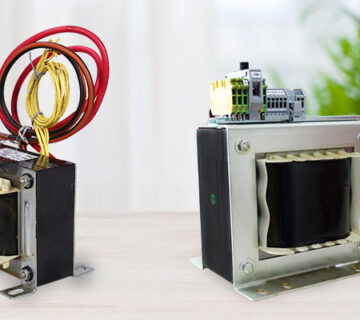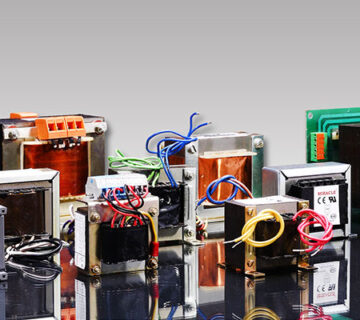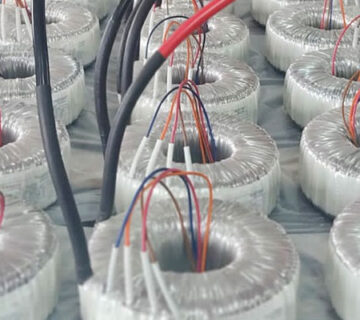Transformers are basically used to increase or decrease voltages in an electric circuit using the principle of electromagnetic induction, when the supply voltage or line voltage available does not match the input voltage requirements of the device that needs to be operated. There are a variety of different types of transformers used for different applications, each having a different construction and working. But, the basic of every transformer generally remains the same – there are one primary and one secondary coils wound around a core that are responsible for transferring electrical energy by means of a changing magnetic field.
However, there is one particular type of transformer that has only one coil instead of two separate primary and secondary coils. This is the three-phase auto-transformer, which has a single coil acting as both primary and secondary. Unlike regular transformers, the three-phase auto-transformer’s windings do not insulate electrically; instead, induction happens on self-induction. With the primary and secondary connections being connected in both electrical and magnetic ways, the rest of the working remains the same as in the case of any other regular transformer.
Applications of three-phase auto-transformers
Three-phase auto-transformers are used in electrical power transmission systems, power distribution systems, audio systems, induction motors, and railway systems. When there is a voltage drop in the distribution lines, these transformers can be used to correct this drop. Also, beginning an induction motor requires higher current, which is why the voltage drops. These transformers thus boost up the voltage when the motor is switched on.
Advantages of using three-phase auto-transformers
- Three-phase auto-transformers are smaller and cheaper than traditional transformers of the same rating, thus reducing the space to install the transformer, and also reducing the cost.
- There is lesser flux in three-phase auto-transformers, which allows for improved regulation; and lesser copper loss too, which makes them more efficient.
Disadvantages of using three-phase auto-transformers
- Three-phase auto-transformers have very less impedance as compared to other regular types of transformers.
- With no insulation between the primary and secondary windings, these transformers cannot be used to step down very high voltages for a smaller load.
- Three-phase auto-transformers need special protection as they are very sensitive to the surrounding environment.
While buying a three-phase auto-transformer
Comparing all the pros and cons of a three-phase auto-transformer, you can well decide as to whether it is a suitable choice for your application or not. But, before you decide on purchasing this transformer for your device, there are a few considerations you must make, such as –
The primary and secondary voltages – The primary voltage of the transformer must match the supply voltage or line voltage available; while the secondary voltage must match the input voltage requirements of the load connected to the transformer.
The winding material – You may choose aluminum as it is lesser expensive, but copper windings can ensure long-lasting, durable, and corrosion-resistant windings that require minimum maintenance.
The power rating – This indicates the maximum load the transformer can handle, which is expressed in terms of kVA. You must choose a transformer with a power rating more than your maximum capacity.
The frequency – Check the frequency of the operation of the transformer, as it can only step up or step down the voltage, and cannot alter the frequency of the supply voltage.
Take all these considerations into account, and discuss your requirements with the professionals at Miracle Electronics to have your three-phase auto-transformers made. You could buy from the readily available transformers, or have your own special customized transformer made from this experienced and skilled 3 phase transformer manufacturer in India.




